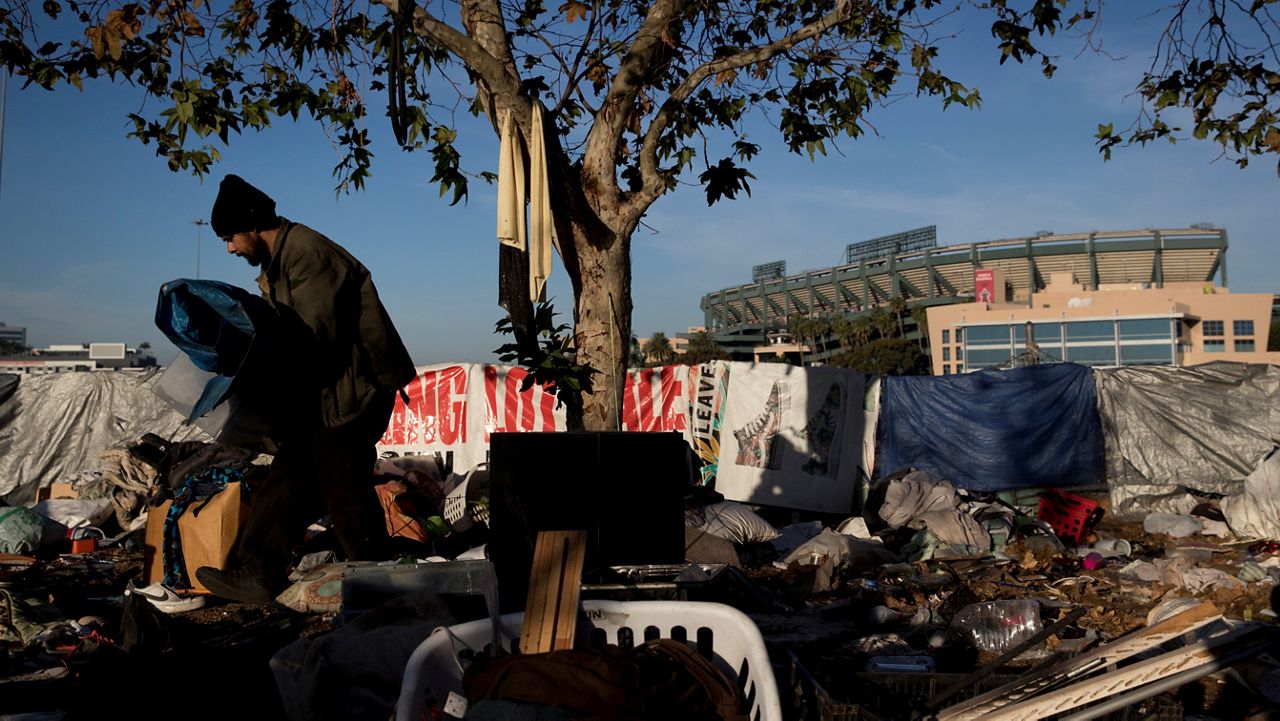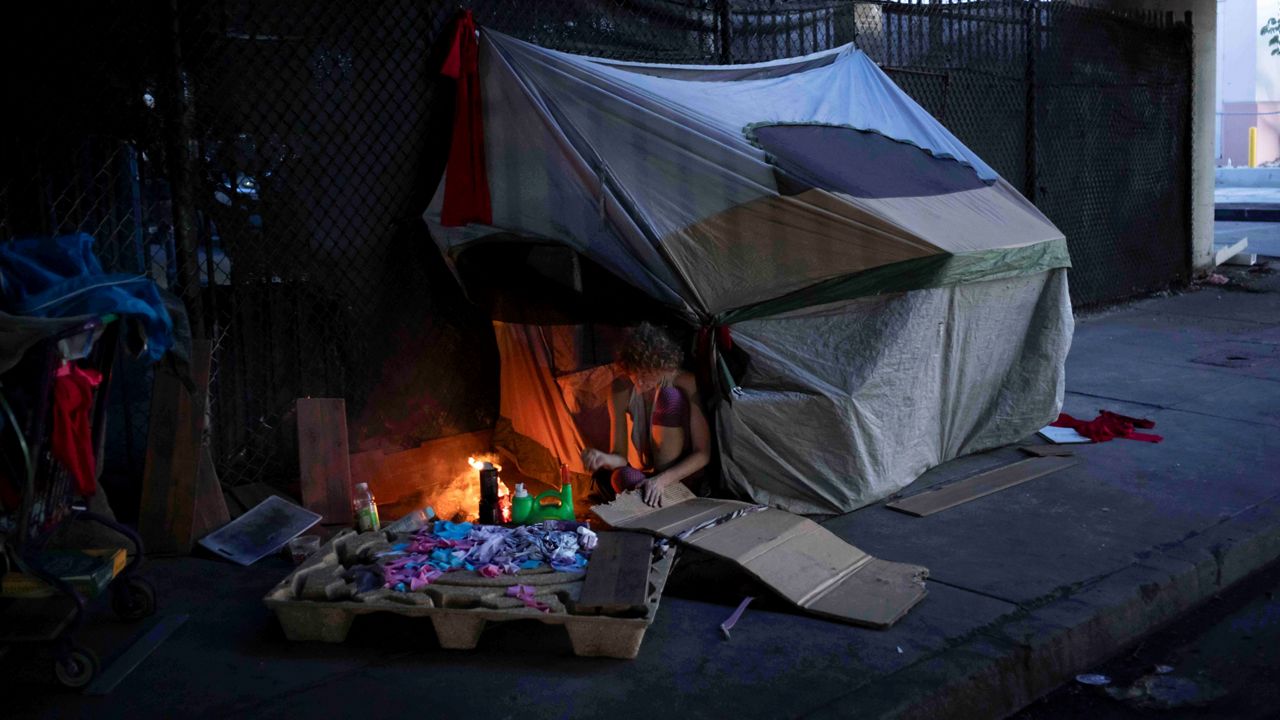EDITOR'S NOTE: Multimedia journalist Chace Beech spoke with Mayor Bass and homeless individuals about how the Inside Safe program is going so far. Click the arrow above to watch the video.
LOS ANGELES (CNS) — More than 14,000 homeless Angelenos have been moved inside in the first six months of Mayor Karen Bass’ administration, the mayor’s office announced Tuesday.
Alongside her homelessness and housing team, Bass made a presentation on the progress made thus far in the homelessness crisis, as she did in March. The mayor said her team organized the presentation because Angelenos “want to see progress.”
“We want to talk about challenges we have. We want to talk about solutions and we want to talk about the way forward,” Bass said. “We believe that the emergency continues, but we do see a way forward.”
In her first update in March, Bass announced that 4,000 homeless Angelenos were brought inside, but the officials said Tuesday that he actual number was 8,000. An additional 6,000 homeless Angelenos have been brought inside to date, she added.
Va Lecia Adams Kellum, CEO of the Los Angeles Homeless Services Authority, cited data challenges for the undercount in March, such as lag times and data entry that caused delays in figures being validated.
“For example, we have a system for collecting data about who was actually moving from tents in housing that was not what we needed it to be,” Kellum said. “We actually underreported our numbers because we didn’t have a full accounting of people who had been helped.”
Kellum said data have been reviewed and corrected, giving a “true sense of how many people moved from tents into motels, including A Bridge Home and tiny home villages.”
A total of 14,381 people were brought inside through various means, including 8,726 through LAHSA intakes, 1,323 via the mayor’s Inside Safe initiative, 1,591 using emergency vouchers, 1,397 using other tenant-based voucher programs, and 1,344 people who were housed in new permanent housing units.
Deputy Chief of Housing and Homelessness Solutions Mercedes Marquez noted the city and its partners completed 19 Inside Safe operations in 10 of the 15 Council Districts during the pilot phase of the program. By the end of June, the mayor’s office intends to complete two more operations.
Since March 22, Inside Safe operations in Hollywood, Harbor City and South LA resulted in 262,700 pounds of waste being cleared from the streets, officials said. In addition, no encampments have returned so far in areas where Inside Safe operations took place earlier in the year, the mayor’s team said.
Bass said her office identified $23 million from a recent opioid settlement that will be used for contracts with substance treatment programs to treat homeless Angelenos as soon as possible. The city will also seek to contract with various organizations to increase wraparound services, including physical exams, dentistry and mental health services.
In addition, Marquez said the mayor’s office and its partners are looking into different opportunities for RV storage and provide those residents with the same essential services to address homelessness.
“Most residents of RVs don’t see themselves as homeless,” she added.
As part of the mayor’s plans to address homelessness, her team is preparing an acquisition and long-term leasing program to purchase hotels and other interim housing to keep people housed in the same City Council districts.
As of June 11, about 5% of homeless Angelenos who were brought inside via Inside Safe were placed in interim housing in a part of the city that was not near their original encampment, officials said.
The mayor expressed concern that as COVID-related tenant protections go away, more people might become homeless.
“We need to let folks know that the council passed tenant protections,” Bass said. “We have these resources to educate the public about the existence of those protections.”










